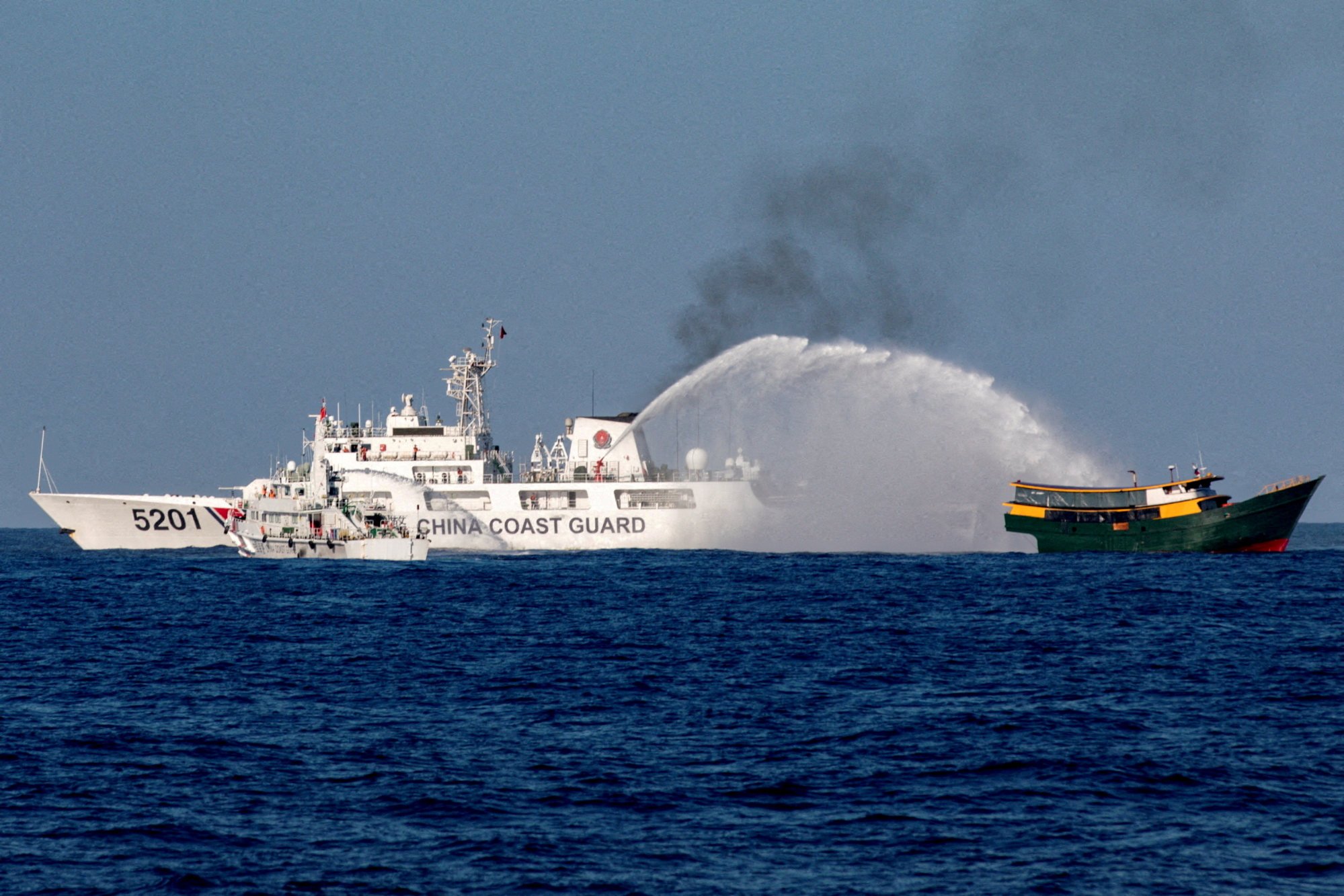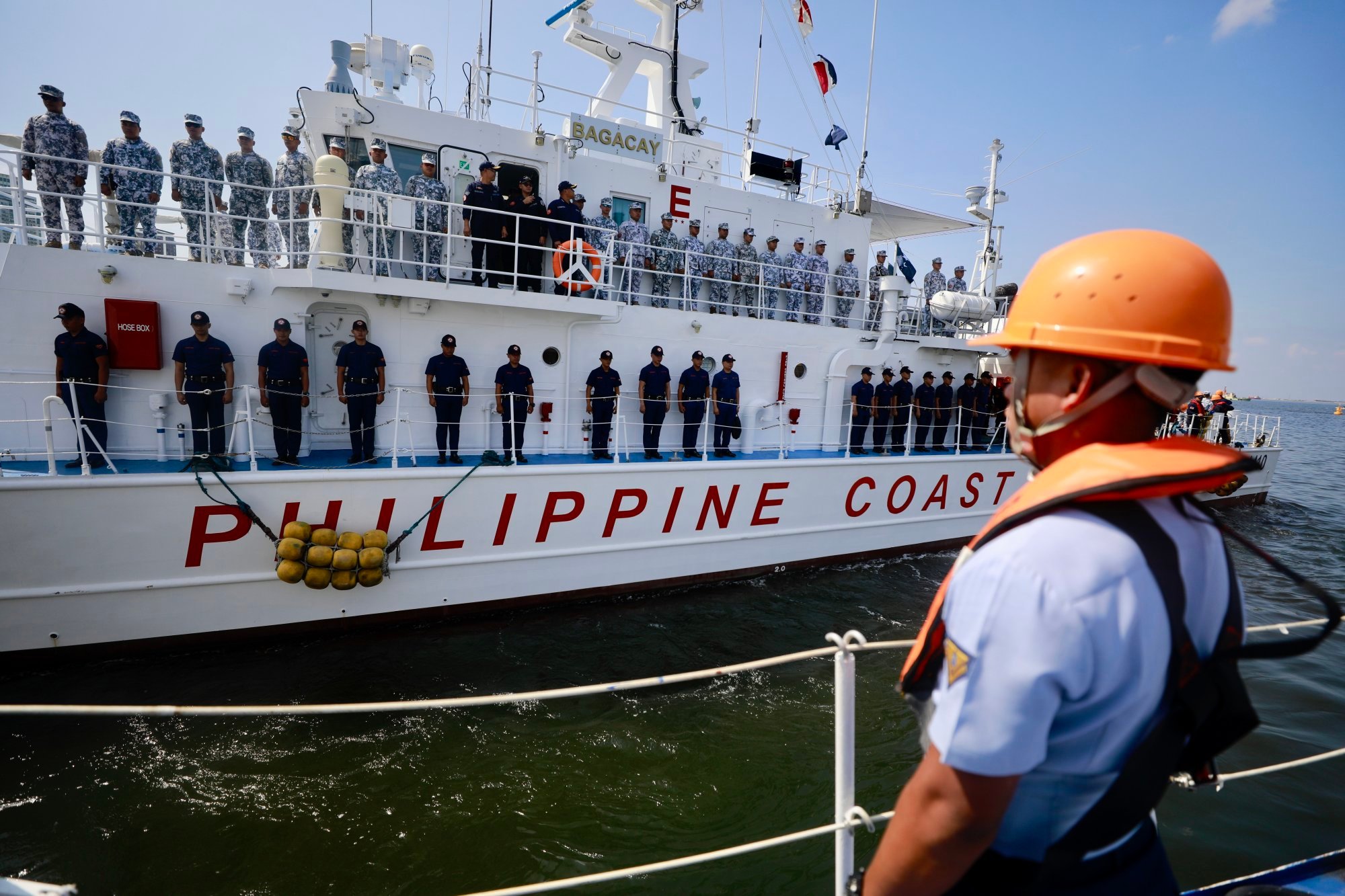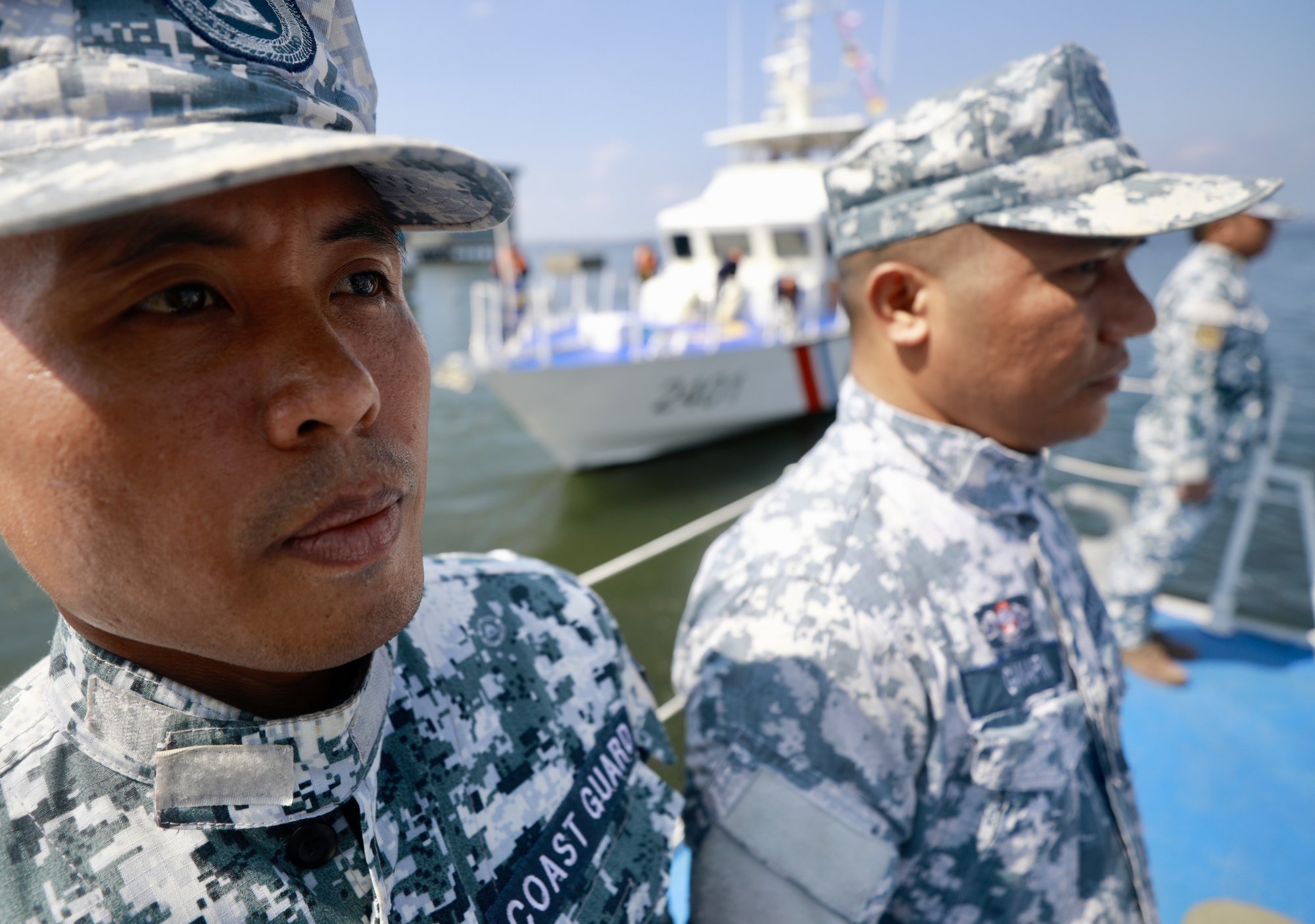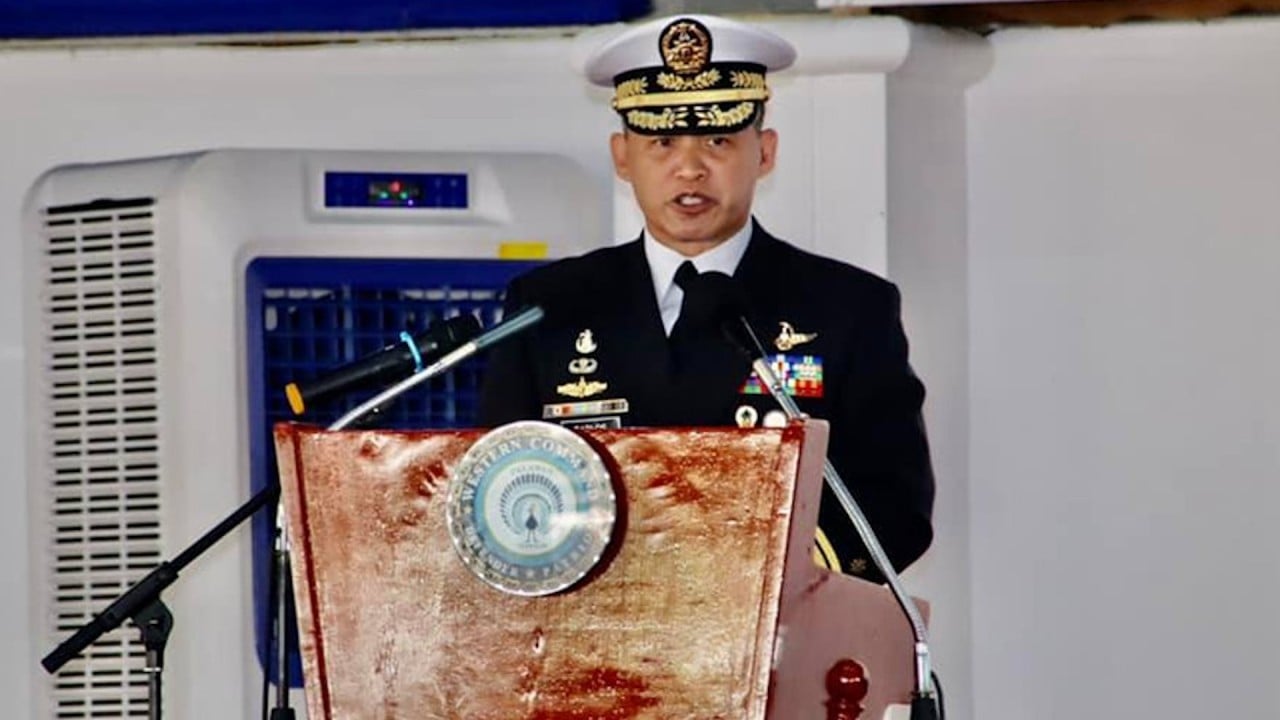However, resorting to diplomacy was a close second to military action in the survey, according to Ranjit Rye, the president of Octa Research.

While presenting the survey’s results on Thursday during a forum held by local think tank Stratbase ADR in Manila, Rye noted that those who favoured “diplomacy and other peaceful methods” was 72 per cent, just one point behind those who said they supported military action.
“The recent survey results showing high public support for the Marcos administration’s tougher, more aggressive stance against China indicates strong public approval,” he said.
In fact, he said, public satisfaction with Marcos Jnr’s approach to the South China Sea dispute had been dropping – hitting a low of 43 per cent in July last year – before it started rising after the president became more assertive. By the second week of March this year, public support was at 61 per cent.
The worsening territorial dispute between Manila and Beijing – in which Chinese coastguard ships have frequently blocked, rammed and fired high-pressure water cannons at Philippine coastguard vessels – led to 76 per cent of Filipino respondents to call China “the greatest threat to the Philippines”, with the highest percentage (86 per cent) from Metropolitan Manila.
Rye did note that China’s trust rating rose to 38 per cent in February 2022, when two bridges being built with Chinese aid in Metro Manila were publicised as nearing completion.

Speaking at the same Stratbase forum, Renato De Castro, an international relations professor with De la Salle University, said “it’s very nice to hear that Filipinos support government action … I simply am wondering out loud whether they’re willing to support the funding [that goes with it]”.
He said the CADC would require the military “to protect” the country’s maritime territory “to ensure that our maritime buffer remains there to protect the islands from any power that would enter, encroach into our maritime domain and of course threaten the islands”.
“In our maritime domain, it’s not simply a case of territorial dispute, we have a case of a growing maritime power that is bent simply on expansion,” De Castro said.
He said the only way the military can do that at this time, with reduced costs, is “through joint forces …[with] like-minded countries.”

For starters, the Philippine coastguard has broached the concept of joint patrols in the South China Sea with the US and Japan.
A separate statement issued on Wednesday by the Philippine coastguard quoted the country’s navy chief, Admiral Ronnie Gil Gavan, telling his counterparts: “I’d like to propose greater deployment in the high seas. We will do our part, but we also need you to be there to maintain rules-based order the way coastguards should play their role.”
The Philippines, the US and Japan maintain that because of the 2016 arbitral ruling by the International Tribunal on the Law of the Sea, which negated China’s Nine-Dash Line, a central portion of the South China Sea remains designated as “high seas” outside any country’s maritime territory.
China has rejected this and considers nearly all of the South China Sea, including large parts of the West Philippine Sea, to be its maritime territory.
Joint deployment with the US coastguard is legally possible since the Philippines has a 1951 Mutual Defence Treaty with the US. Tokyo is also poised to soon sign an agreement with Manila that would facilitate military cooperation including joint troop training and equipment transfers.


